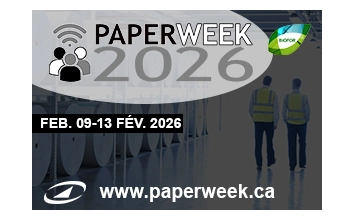Let’s unpacks the Hype and Reality Behind Market Panic
With headlines swirling about a looming tissue paper shortage in the U.S., some consumers are experiencing déjà vu, recalling the panic-buying episodes of early 2020. But these fears are overstated, misinformed, and potentially damaging.
In a detailed commentary posted on March 31, 2025, I sharply dissected the situation, drawing a line between perception and reality. “There is no actual shortage of wood, pulp, tissue, or transport capacity. The fundamental supply chains are intact, and inventories remain healthy across most U.S. retail and distribution networks.”
The Root of the Panic: Tariff Anxiety, Not Supply Disruption
At the heart of the commotion was the expected imposition of new U.S. import tariffs on pulp and paper products, including those from key partners such as Canada, Brazil, and the EU. These tariffs, formalized in early April 2025, are designed to rebalance trade flows but could unintentionally drive up input costs for domestic converters and tissue manufacturers.
A critical nuance: rising costs do not equate to scarcity. Price turbulence and cost pass-throughs are likely—yes. But supply disruption? That’s not what’s happening. What we’re witnessing is a possible ‘psychological run’ on tissue due to consumer misinterpretation of economic signals.
The Risk of a Self-Fulfilling Prophecy
My key concerns is the media’s role in amplifying risk narratives, potentially triggering artificial demand spikes. When news cycles echo the word ‘shortage’ without context, it’s not long before retail shelves start emptying—not because the supply chain failed, but because perception overran reality.
This phenomenon—where fear-induced buying creates the very scarcity people are trying to avoid—is especially relevant in consumer staples like tissue and hygiene paper. Let’s compare this to the toilet paper rush of 2020: the actual disruption then was temporary and more logistical than structural.
Capacity is There—And Growing
I also bring attention to current capacity expansions that contradict the idea of a fragile or under-supplied market. In recent months, First Quality Tissue announced the start-up of another Through-Air-Dried (TAD) machine, and Kruger Products has been optimizing output at its Sherbrooke site in Canada.
These are not crisis-time bandages. They are strategic, long-term investments responding to healthy market fundamentals and growing private-label share in North America.
Indeed, industry data supports his outlook: North American tissue capacity utilization has been stable to slightly improving, and inventory levels among distributors and wholesalers have not shown signs of distress. Private label brands, known for their leaner cost structures, continue gaining ground—especially as consumers trade down amid inflation.
Private Label: A Strategic Advantage in Uncertain Times
Another point is that private label tissue producers are well-positioned to navigate tariff-induced cost volatility. They have more pricing agility, lower marketing overheads, and increasingly comparable quality to branded offerings. These dynamics are cushioning the system against any potential shocks.
Retailers like Costco, Target, and Kroger have been expanding their in-house tissue lines, supported by regional converters with access to reliable pulp flows. If anything, this is a chance for domestic players to optimize value capture—not a reason to panic.
The Bottom Line: Caution, Not Crisis
The message: let’s not manufacture a crisis where none exists. The tissue market may face cost pressure and short-term pricing noise, but structurally, it remains resilient, balanced, and sufficiently supplied. Yes, tariffs may disrupt trade economics, but not production or availability—not at this point.
This industry has proven its adaptability, whether through energy crises, pandemics, or freight bottlenecks. Let’s focus on facts, not fear.
To provide further context, here’s a table summarizing ky metrics of the U.S. Tissue Market over recent years:

Notes:
- Q1 2025 Estimates: Production and demand figures are estimated based on quarterly averages derived from annual data.
- Imports and Exports: The import and export figures for Q1 2025 are estimated based on proportional quarterly distributions of the 2024 annual data.
- Inventory Variation: The "Slight drawdown" in Q1 2025 reflects a minor reduction in inventory levels, consistent with seasonal demand patterns.
Sources: U.S. Census Bureau, Bureau of Economic Analysis, and industry reports.
About the Author
 Marcello Collares
Marcello Collares
Sales, Strategy, New Business -
Vice President at Fisher International, Inc.



















